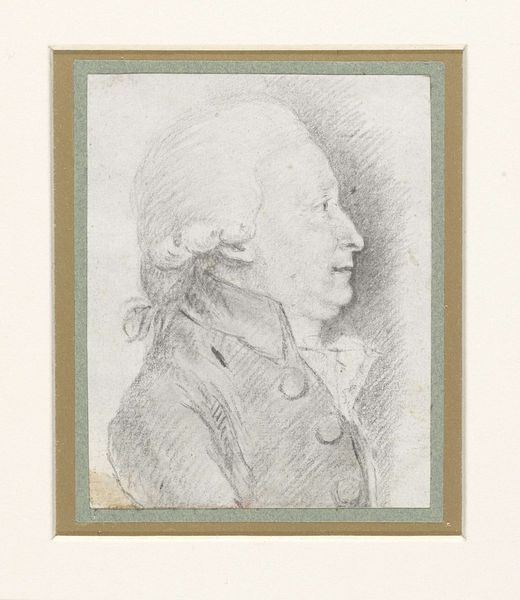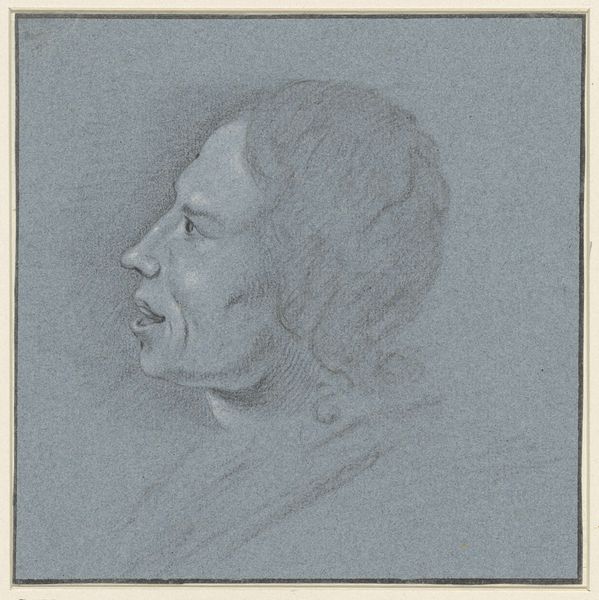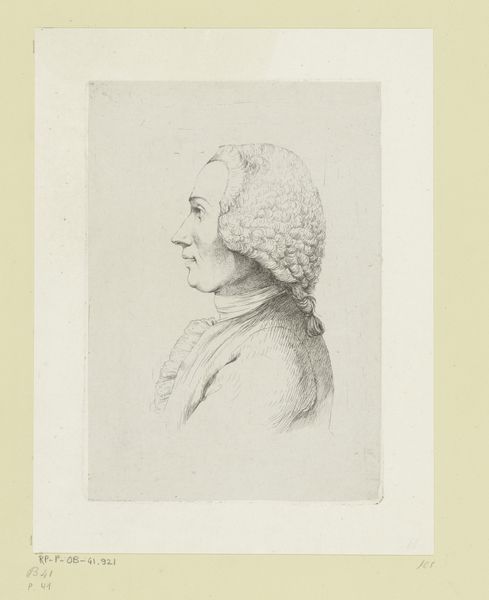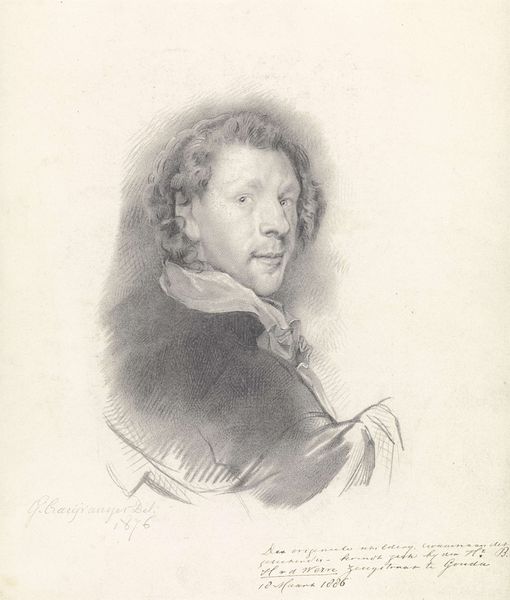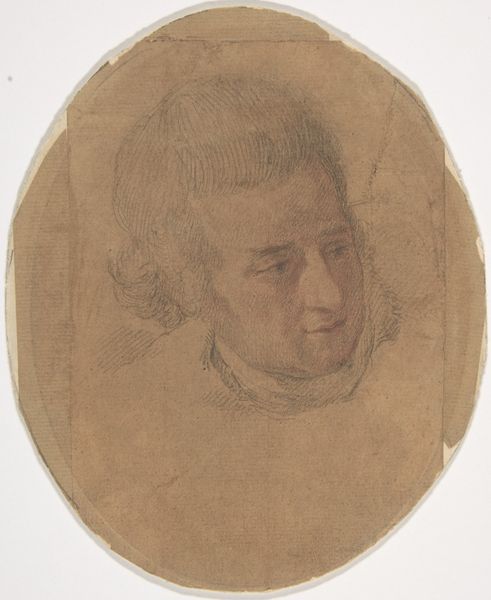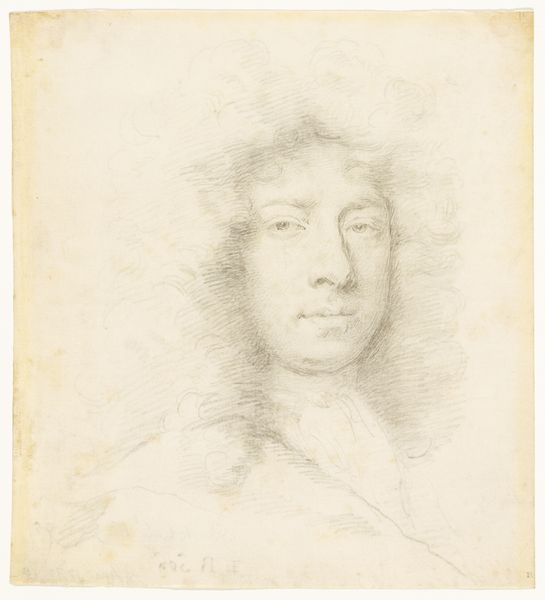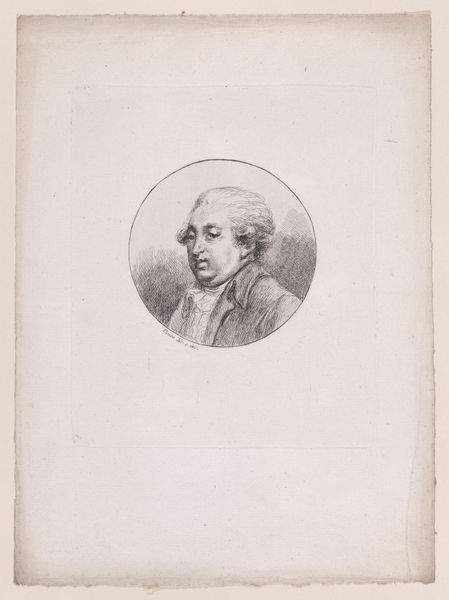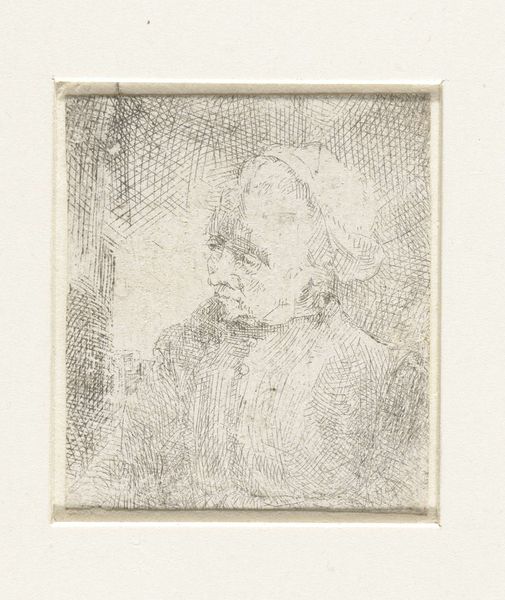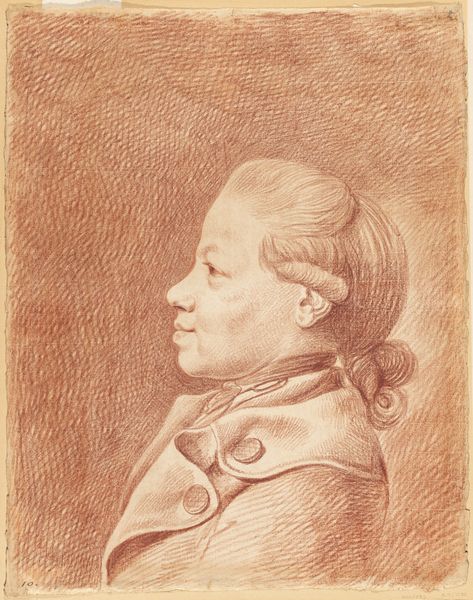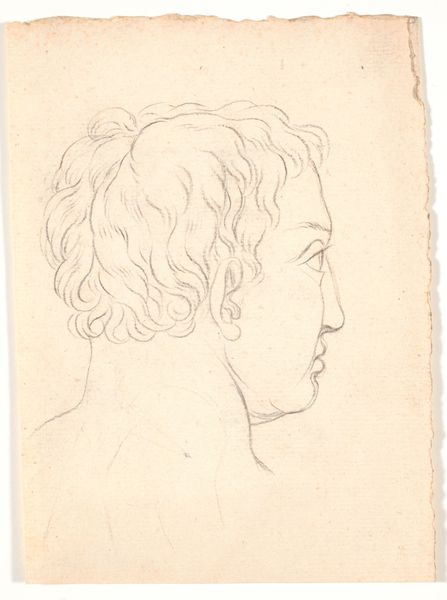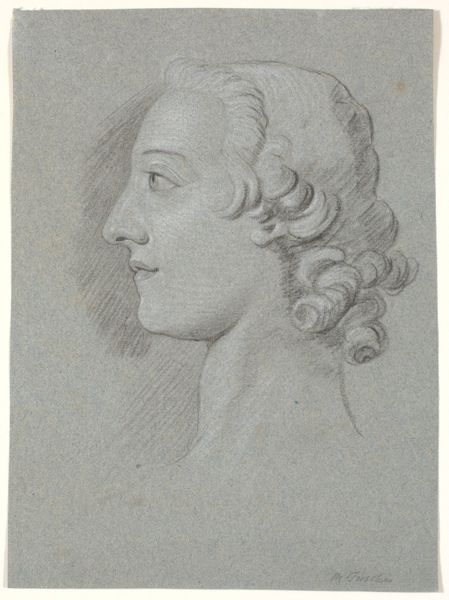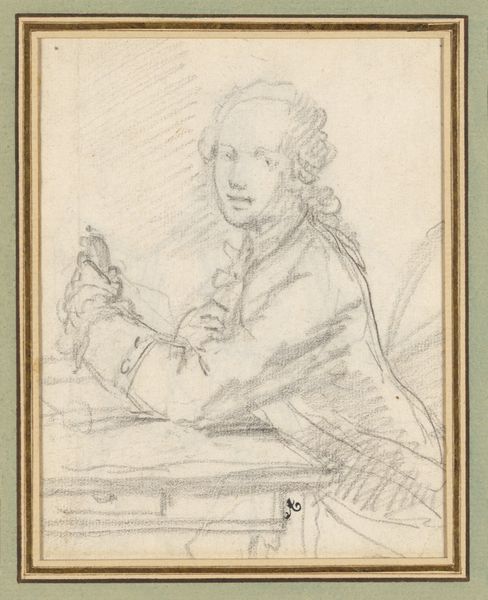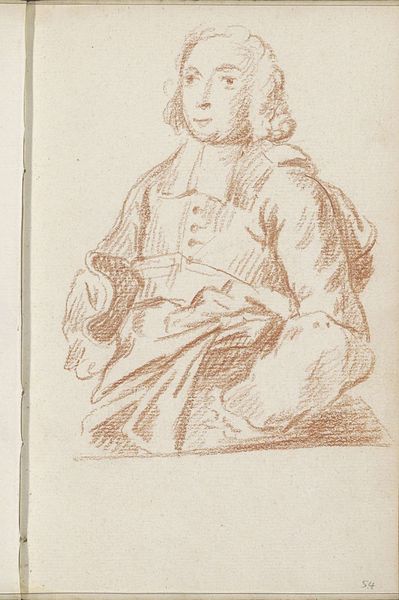
drawing, charcoal
#
portrait
#
drawing
#
self-portrait
#
charcoal drawing
#
figuration
#
classicism
#
romanticism
#
line
#
charcoal
Dimensions: height 85 mm, width 67 mm
Copyright: Rijks Museum: Open Domain
Curator: Before us is a drawing entitled "Profielportret van een jonge man met pruik," which roughly translates to "Profile Portrait of a Young Man with a Wig." It's attributed to Augustin de Saint-Aubin and dates from between 1750 and 1840. Editor: My immediate reaction is a sense of subdued elegance. The soft charcoal strokes lend a dreamlike quality, as if we’re peering into a memory. The precision in capturing the profile is remarkable, especially the almost porcelain curve of the nose. Curator: The romantic ideals prevalent during this time glorified introspection. I find the restraint noteworthy; there’s no overt display of emotion, yet the tilt of his head conveys a sense of pensiveness. I think it speaks volumes about the gendered expectations placed on men. Editor: Absolutely. The wig itself carries immense cultural weight, symbolizing status, power, and conformity within the courtly circles. It acts as both mask and marker of identity. Did men have any say in what wigs they wanted to wear at this time? Curator: It’s less a reflection of individual taste, I believe, and more about adherence to social dictates. Notice, too, how his clothing lacks any embellishment, furthering that feeling of societal control through sartorial codes. I think the simplicity of the piece and his style points toward a subtle critique of aristocratic excess. Editor: That simplicity contrasts beautifully with the implied weight of societal expectations. He looks out with an almost passive expression, but with defiance and challenge brewing underneath the surface. What symbolic significance might a profile have carried? Was this typical for portraits? Curator: Creating a profile isolates the subject, allowing viewers to ponder internal qualities versus public personas. In this period, especially with the rise of Enlightenment ideals, there was increasing scrutiny of moral character. Placing this drawing within the broader social narrative of class struggle deepens our appreciation. Editor: This exploration illuminates not just the subject, but also the hidden layers within ourselves, mirroring our expectations when regarding similar symbolism in today’s cultural landscape. It's striking how relevant it all feels. Curator: Indeed. This artwork challenges us to consider the delicate balance between outward appearance and inward sentiment and it also offers insights into shifting social power. Editor: Yes. The beauty of these older portraits comes from what they reveal about then and what the symbols mean to us now.
Comments
No comments
Be the first to comment and join the conversation on the ultimate creative platform.
